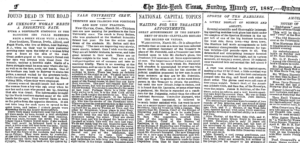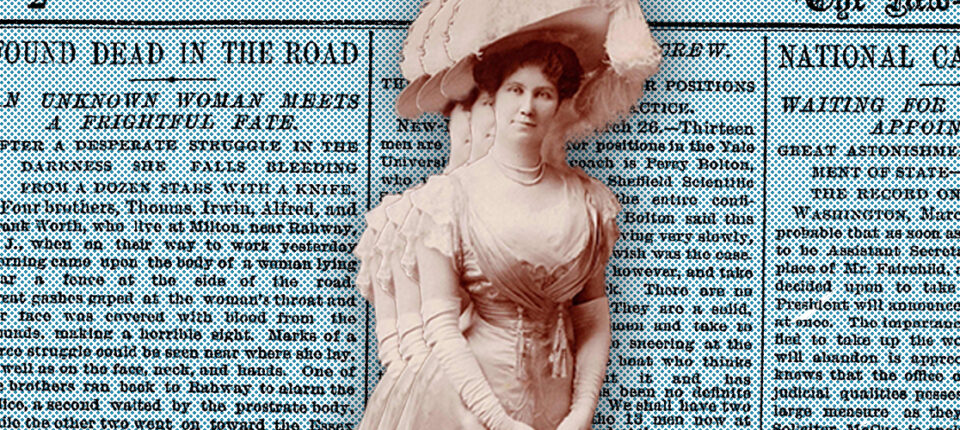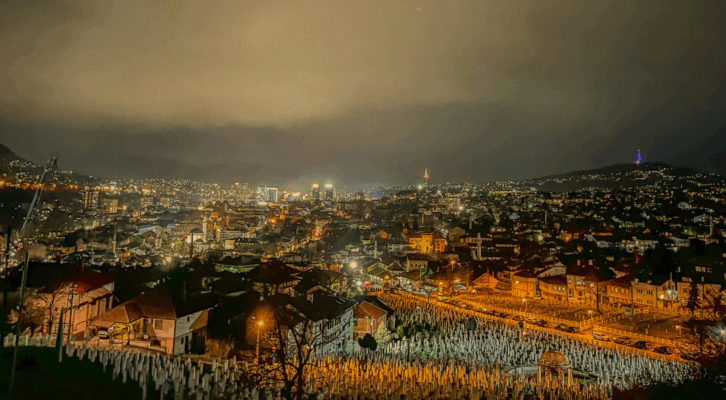During my three-year quest to rediscover a “lost lady” of detective fiction, Carolyn Wells, another mysterious woman appeared in the margins of Carolyn’s backstory. She is referred to as the “Unknown Woman,” the unidentified victim of a Victorian murder in Rahway, New Jersey, where both women are buried within walking distance of each other. Wells never wrote about her, but I have a hunch the cold case inspired Wells’s decades-long career as a mystery author.
In May of 2021, I took a field trip to Wells’s hometown, checking out her former home, the building where she had once worked as a librarian, and her gravesite. It was less “research” and more communion with spirits, especially at the cemetery, where I paused in front of Wells’s austere tombstone and asked forgiveness for the biography I was then planning to undertake. Wells “always hated biography,” as she wrote in her memoir. “The writer invariably finds it necessary to plaster the subject with praises, flattery and adulation and to invest him with all the Christian graces.”
My guide that day was Al Shipley, director of The Merchants and Drovers Tavern Museum, a local history museum that borders the leafy burial ground that contains Revolutionary War heroes, Declaration of Independence signer Abraham Clark, Carolyn Wells, and … the Unknown Woman. Museum programs honor and celebrate all of them, but the Unknown Woman, as one of the town’s great mysteries, is by far the most popular, Shipley told me. Every five years on the first Sunday in October, the museum presents an interactive tour led by costumed interpreters who portray the ghosts of the coroner, the undertaker, the mayor, and others involved in the story. It attracts hundreds of attendees. (The next one is in 2027.)
Shipley has also written a riveting account of the unsolved murder, The Case of the Unknown Woman. So, as we left Wells’s plot, I asked him where she was – in the “back” of the cemetery, I had read, since at the time no one knew if she was “virtuous” enough to be allowed to rest among the others.
We made our way to a small gravestone that reads “An Unknown Woman Found Dead.” The gravesite was decorated with a simple white cross and garish plastic flowers. It wasn’t tacky, though. It felt almost devotional in nature, a reminder not to forget this dreadful story.
 Photo Credit: Rebecca Rego Barry
Photo Credit: Rebecca Rego Barry
On the chilly morning on March 26, 1887, the body of a woman was found on Central Avenue, which, despite its name, was a “lonely, desolate, rarely frequented thoroughfare,” writes Shipley in his book. Her face had been pressed into the ground, her neck slit from ear to ear. Her belongings—a fur cape, an umbrella, a hat, and a basket of eggs—had been scattered about, ruling out theft, and there was no evidence of sexual assault, ruling out rape that had escalated into murder. Stranger still, no one recognized the victim.
By the time someone located a bloody knife nearby, dozens of onlookers had compromised the crime scene. The police bungled around quite a bit, although, to be fair, they “had never been confronted with such a brutal crime.” Because of the nature of this grisly, Ripper-esque murder—which occurred a year and a half before Jack the Ripper’s first known crime, prompting some to later correlate them—it attracted the national news media. Rahway was overrun with reporters, detectives, and literally thousands of people who believed they would recognize the woman, or merely wanted a glimpse at the body.

Many theories about the murder were advanced over several months, and still, no satisfactory conclusion was reached as to the identity of either the victim or the killer. On May 3, the town buried the woman and laid the matter to rest.
As I lingered over the Unknown Woman’s grave, I did some quick math and figured that Wells would have been about twenty-five when the violence occurred—the same estimated age of the victim. Moreover, the slaying occurred only a few blocks away from the Wells home on Elm Avenue. During the investigation, a railroad agent claimed he saw a young woman leave the station and head towards Elm on the night in question, an eerie coincidence.
There can be no doubt that Wells followed the news of the murder. Since she left no diary or correspondence recording her thoughts on the matter, I can only assume she felt chilled by it, particularly by her proximity, and certainly by the fact that the crime went unsolved. Is this one of the reasons she turned to writing murder mysteries? Was there something in her subconscious that drove her to write stories in which the detective always prevails?
Before she tried her hand at mysteries, Carolyn had written in several genres–children’s, poetry, young adult, humor, and anthologies–with much success, but it was the 82 detective novels she wrote between 1909 and her death in 1942 that made her a household name. She excelled at writing country house and locked-room mysteries for a decade before Agatha Christie entered the scene, before the so-called Golden Age began. By the mid-1920s, she was churning out three or more books annually. One newspaper wrote, “It would be perfectly reasonable for Carolyn Wells to claim the title of all-round literary champion of America, if not the world.”
Throughout her career, Wells projected an image of herself as light, amusing, and clever, and there was certainly truth to that. But her darker thoughts manifested in the mysteries that dominated the final three decades of her life: macabre settings, bizarre deaths, and baffling crimes. She spent a lot of time thinking about clues, weapons, and crime scenes, less about character motivation (howdunits vs. whodunits). She felt the main element of a good mystery was the puzzle at its heart, “a stirring mental exercise, with just enough of the complex background of life to distinguish it from a problem in mathematics,” she wrote in The Technique of the Mystery Story (1913), an early history and how-to of the genre.
Of course, the puzzle had to be solved, and that was Wells’s favorite part. Could that have been a deep-rooted psychological response to the Unknown Woman case? I suspect so.
____________________________
From THE VANISHING OF CAROLYN WELLS: INVESTIGATIONS INTO A FORGOTTEN MYSTERY AUTHOR. Reprinted by permission of the publisher, POST HILL PRESS. Copyright © 2024 by the author, REBECCA REGO BARRY. All rights reserved.


















